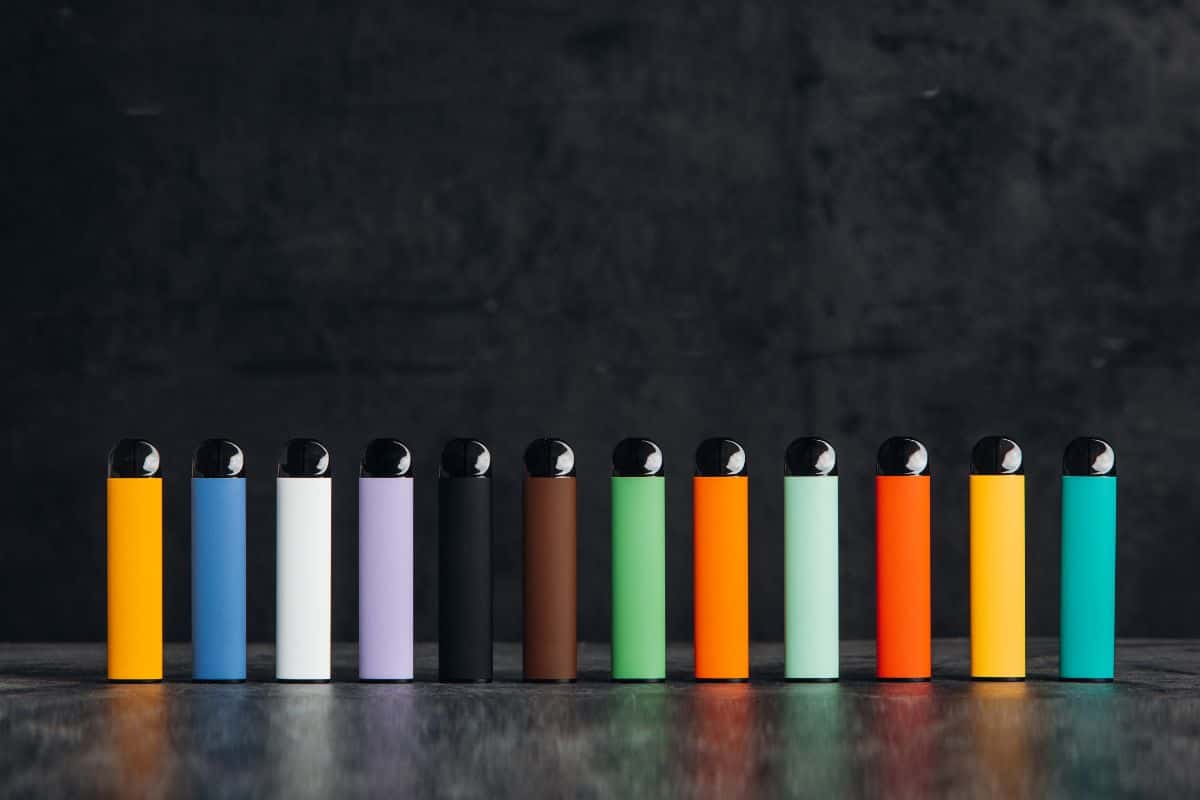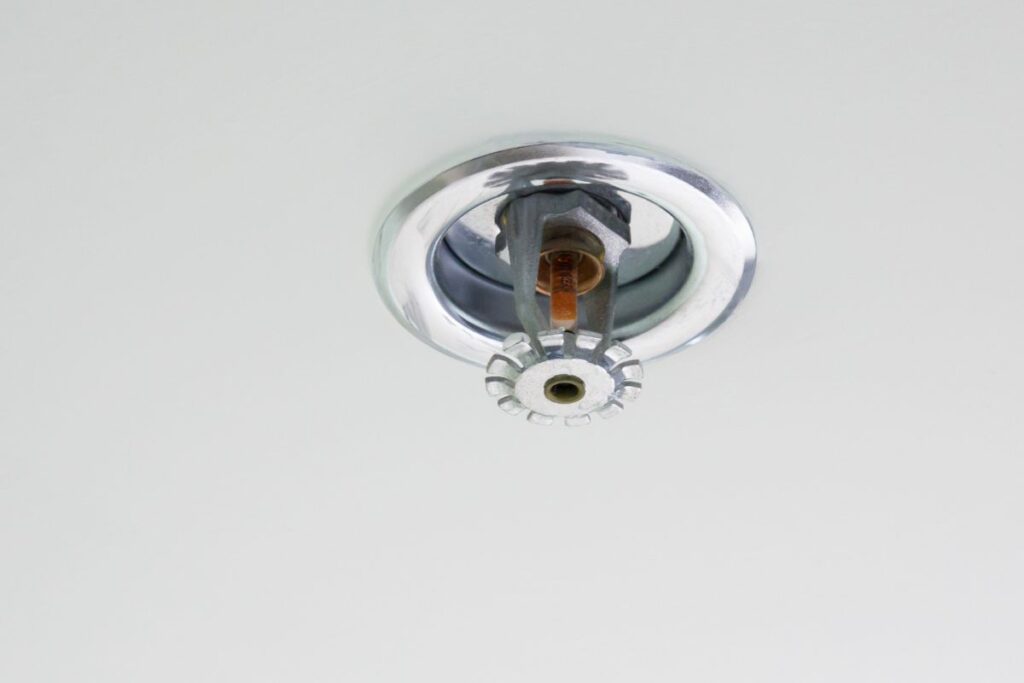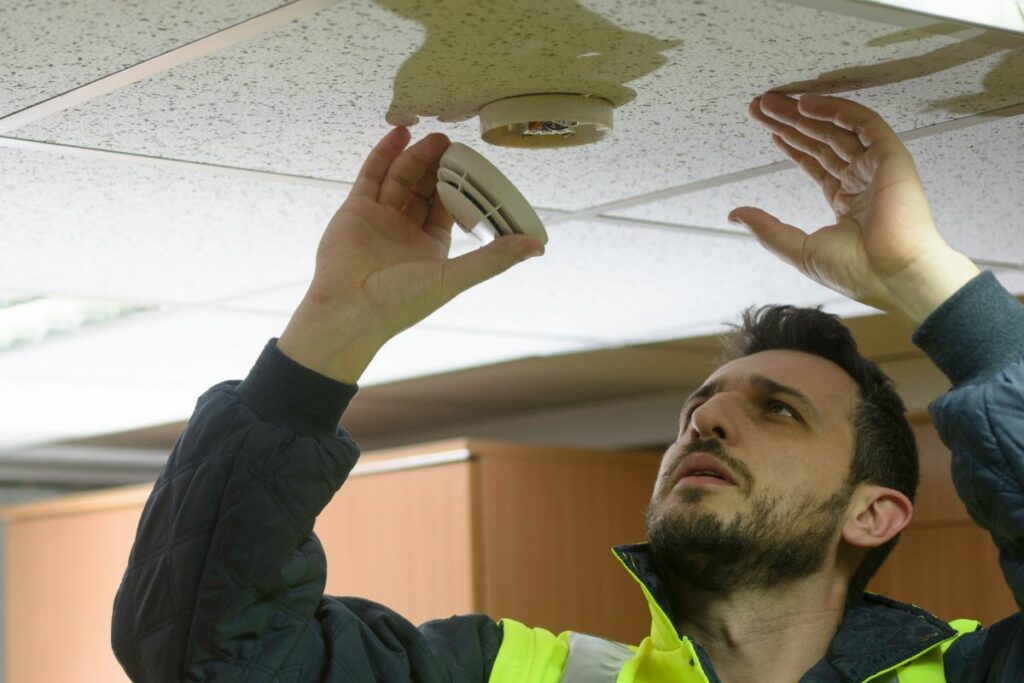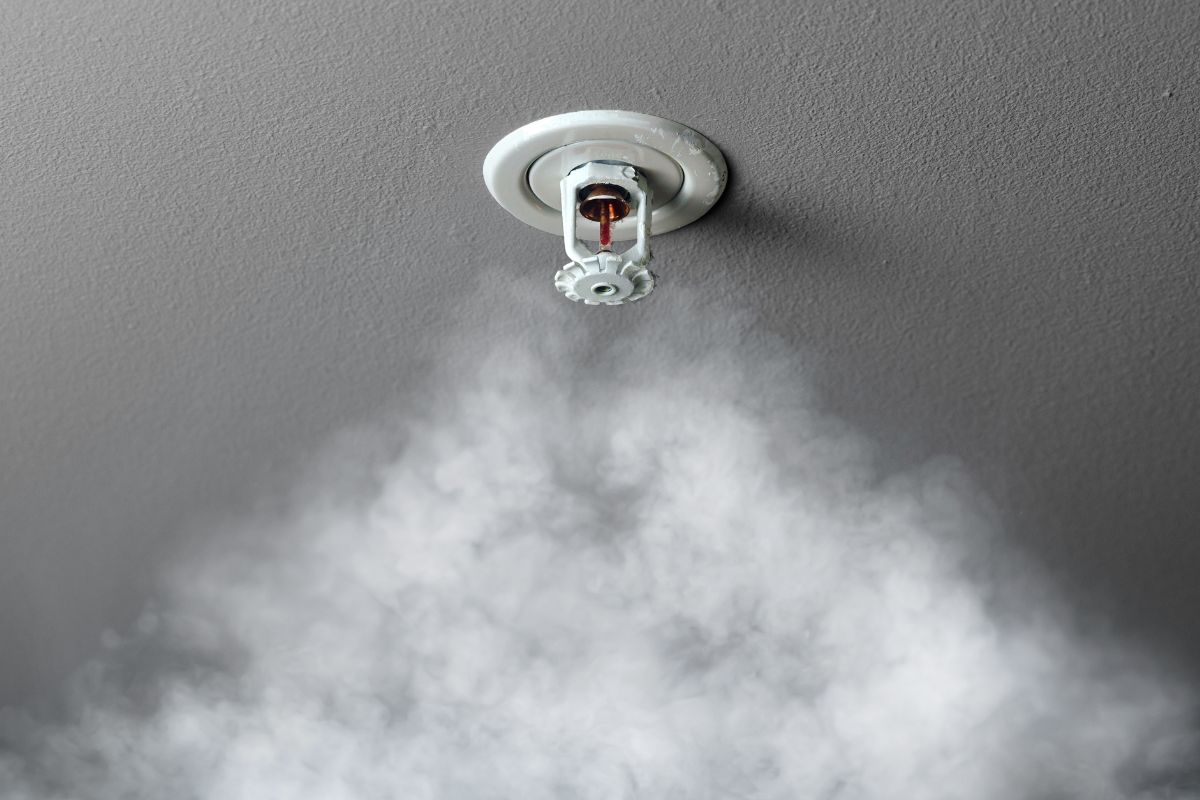Can a Vape Set Off a Sprinkler? Unveiling the Truth
Vaping has become increasingly popular, with a variety of devices such as e-cigarettes, vape pens, and vaporizers on the market. These electronic devices enable users to inhale vaporized e-liquid, or “juice,” that typically contains nicotine, as well as flavorings and other chemicals. As vaping gains prominence, questions arise regarding its potential impact on everyday life and safety systems, including whether the vapor produced by these devices can set off a sprinkler.
One key concern is the interaction between vapor produced from e-cigarettes and smoke detectors or fire alarm systems. Sprinkler systems are typically activated by heat or smoke, not vapor.
Nevertheless, the possibility of vapor from electronic cigarettes or vape devices triggering a sprinkler system cannot be entirely ruled out. To understand this phenomenon further, it is essential to explore the mechanisms of various sprinkler systems and the properties of vapor emitted by ELFBAR devices and other e-cigarettes.
Sprinkler systems function by detecting heat or smoke in the surrounding environment. They react based on preset thresholds. Therefore, it is crucial to understand whether the vapor produced by e-cigarettes has properties that might resemble smoke or generate enough heat to trigger a sprinkler system. In the next sections, we will delve deeper into these factors and explore under what circumstances vaping might set off a sprinkler.
NEW CUSTOMER DISCOUNT
Save 15%
15% OFF YOUR ENTIRE ORDER FOR NEW CUSTOMERS USE CODE WELCOME15!

Table of Contents
Explaining Vaping and Its Influence
Vaping is the act of inhaling and exhaling aerosol, commonly referred to as vapor, produced by an electronic device called a vaporizer or e-cigarette. These devices utilize a liquid solution known as e-liquid or vape juice, often containing nicotine, to create the vapor. A wide variety of vaporizers and e-cigarette devices exist, such as vape pens and more advanced systems like sub-ohm devices.
Vapes come in different designs and functionalities, with some offering disposable options for convenience and affordability. Disposable vapes are pre-filled with e-liquid and do not require charging or refilling, making them a popular choice for those new to vaping or seeking a hassle-free experience. With the growing popularity of vaping, there is an extensive selection of vape devices and e-liquid flavors on the market.
The vapor produced by these devices is often misunderstood as smoke, but it is fundamentally different. E-cigarettes and vaporizers work by using heat to convert the e-liquid into vapor, allowing the user to inhale the aerosol. Unlike traditional tobacco cigarettes, vapes don’t rely on combustion, which eliminates most of the harmful byproducts associated with smoking.
Some concerns have been raised about whether vaping can set off fire alarms and sprinkler systems. While it’s highly unlikely, in certain situations, the vapor produced by e-cigarettes can potentially trigger alarms. This is primarily due to the particulates in the vapor that may be detected by sensitive smoke and fire detection devices. However, this occurrence is minimal, and the vapor is typically harmless and dissipates quickly.
Lastly, it’s essential to understand that different brands and products cater to various user preferences and needs. For instance, SMOK is a well-known manufacturer of vaping devices and offers a wide range of products like the SMOK Novo Bar AL6000 Disposable Vape, which combines convenience and performance for users seeking a enjoyable, on-the-go vaping experience.
As the vaping industry continues to evolve, it’s crucial to remain informed about the different options available and select the one that suits the individual’s preferences and goals.
Impact of Vaping on Different Alarm Systems
| Alarm System | Impact of Vaping Detection |
|---|---|
| Fire Alarm | Minimal Impact: Traditional fire alarms are not designed to detect vaping. However, false alarms may occur if there is a significant amount of vapor. It’s important to ensure proper ventilation in areas where vaping is allowed to prevent false alarms. |
| Smoke Detector | Limited Impact: Standard smoke detectors are not designed to specifically detect vaping aerosols. However, dense vapor or aerosol could potentially trigger a smoke alarm. Regular ventilation is crucial in vape-permitted areas to prevent false alarms. |
| Air Quality Monitor | Significant Impact: Specialized air quality monitoring systems designed to detect specific chemicals in vaping aerosols can provide accurate alerts when vaping occurs. These systems are specifically engineered for this purpose. |
| Security Alarm | Limited Impact: Traditional security alarms are not designed to detect vaping. They are focused on security breaches and intrusion detection. Some specialized security systems may integrate vaping detection as an additional feature. |
| Vaping Detection System | High Impact: Purpose-built vaping detection systems are designed to specifically identify vaping aerosols. These systems can provide accurate and reliable alerts when vaping occurs. They are engineered to reduce false alarms associated with other alarm types. |
Vaping devices, commonly known as electronic cigarettes or e-cigarettes, have gained popularity in recent years. With their rise, concerns have been raised about the potential of vape devices setting off alarm systems, such as fire alarms and smoke detectors.
Fire alarms are designed to detect smoke or heat to warn occupants in case of a fire. There are various types of alarm systems, including smoke detectors, heat detectors, photoelectric alarms, and optical smoke alarms. Each of these systems has a unique way of detecting potential danger.
Smoke detectors are the most common type of alarm system found in homes and businesses. These devices are sensitive to airborne particles released during combustion. On the other hand, heat detectors are triggered by a rapid increase in temperature, which is typically associated with fires. They are less sensitive to smoke or vapor and are typically used in high-temperature environments, like kitchens.
Vaping devices create an aerosol that can mimic the appearance of smoke; however, it doesn’t contain the same elemental composition as smoke produced by burning materials. As a result, vape devices could potentially trigger smoke detectors, depending on their sensitivity and the proximity of the vaping activity.
Photoelectric alarms and optical smoke alarms, which rely on detecting changes in light patterns caused by smoke particles, are more likely to be activated by the aerosol produced by vaping, especially if the vapor is thick and closely resembles smoke.
In contrast, heat detectors are less likely to be affected by vaping, as the aerosol produced does not cause a rapid increase in temperature. Vaping devices also emit minimal heat, typically not enough to trigger these types of detectors. It is important to note that each alarm system is unique and might react differently depending on the sensitivity of the device and the situation.
When it comes to metal detectors, a separate concern arises with vaping devices, as they may contain metal components. The question of whether vape devices can be detected by these types of security systems has been raised, especially in environments where carrying such items may be restricted.
In summary, the impact of vaping on various alarm systems depends on the sensitivity of the detector and the vaping activity’s proximity. While heat detectors are less likely to be triggered by vaping, smoke detectors and certain types of optical alarms might be susceptible to false alarms in such situations. It is essential for users to be aware of these potential complications and act responsibly when using vape devices near alarm systems.
Understanding Sprinkler Systems

Sprinkler systems are an important safety measure in various buildings and establishments. These systems consist of a network of pipes and devices designed to automatically extinguish fires by distributing water. The main components of a sprinkler system include the sprinkler heads, which release water when triggered, along with valves, water supply, and a control panel. Sprinkler systems play a crucial role in mitigating fire damage and protecting lives.
There are different types of sprinkler heads, designed to cater to specific requirements. Standard fire sprinkler heads are responsive to heat and release water when the temperature exceeds a preset threshold. These sprinkler heads are either pendant, upright, or sidewall-mounted. In contrast, special fire sprinklers are designed for unique applications, such as high-hazard or decorative installations.
Moreover, fire sprinkler systems can be classified as wet, dry, pre-action, or deluge systems, depending on how water is stored and discharged. Wet pipe systems, the most common type, have water constantly present in the pipes and deliver water instantly when a fire sprinkler head is activated. Dry pipe systems use pressurized air, which is released before water flows when the fire sprinkler head is triggered. These are typically used in colder climates to prevent pipe freezing.
Pre-action systems are a hybrid between wet and dry pipe systems. They use pressurized air or nitrogen in the piping, and water is only released when a separate fire detection system confirms that a fire has occurred. This helps to minimize accidental discharge of water.
Lastly, deluge systems are used in high-hazard areas, and water is not present in the pipes until a separate fire detection system confirms a fire and opens a valve, releasing water simultaneously through all the sprinkler heads within the designated area.
The question of whether a vape device can set off a sprinkler system depends on various factors. In most cases, vape devices emit vapor, which is less likely to trigger standard fire sprinkler heads.
However, in poorly ventilated or confined spaces, it might be possible for vape devices to set off sensitive smoke detectors, which could activate pre-action or deluge sprinkler systems. It is crucial to understand that although unlikely, employing caution when using vape devices in proximity to sprinkler systems is advised.
Possibility of False Alarms

Electronic cigarettes or vapes have gained popularity in recent years. Some individuals may be concerned about the possibility of their vaping device causing a false alarm with fire detection systems such as sprinklers. Understanding the factors that contribute to false alarms and the sensitivity of fire detection systems can provide valuable insight into the likelihood of this occurring.
Vaping devices release a vapor that resembles smoke, which may cause concern that it could activate fire detection systems. However, the vapor produced by these devices is usually made up of water, propylene glycol, vegetable glycerin, and flavorings. It lacks the harmful chemicals and particulate matter found in tobacco smoke.
Fire detection systems, especially modern ones, are designed to differentiate between the presence of smoke and harmless vapors like those produced by vapes. As a result, the chances of false alarms due to vape use are low.
Human error, technical malfunctions, and other factors can contribute to false alarms. For instance, a faulty sensor in a fire detection system might mistake the vapor from a vaping device for smoke and trigger an alarm. Sprinkler systems, on the other hand, are less sensitive to non-smoke elements and are generally activated by heat, which further reduces the chances of vape devices setting off these systems.
In summary, the vapor emitted by vapes is unlikely to set off sprinkler systems. However, other factors, such as malfunctioning equipment or human error, can potentially lead to a false alarm. Despite these concerns, ensuring the proper installation and maintenance of fire detection systems can significantly decrease the likelihood of false alarms.
Choosing the best disposable vape or understanding the effects of vaping on oral health can help individuals make informed decisions regarding their vaping habits while minimizing any potential danger.
Vaping in Public Spaces

Vaping has become increasingly popular in recent years, and with the rise of various devices such as the Elf Bar Airo Max 5000 and Flum Pebble 6000, it’s no wonder that concerns over vaping in public spaces have also increased. When it comes to vaping in public buildings, offices, and hotels, certain regulations are in place to ensure the safety and comfort of all.
One of the major concerns in public spaces is the possibility of a vape setting off a sprinkler system. While this might sound unlikely, it’s important to understand how the devices work and the potential impact on the environment. Devices like the Yocan UNI Pro create aerosolized vapor that contains tiny particles. These particles could theoretically activate a sprinkler if they come into close contact with it under the right conditions.
In many public places, vaping is indeed prohibited, largely due to concerns over secondhand exposure and to maintain a comfortable environment for everyone. This includes hotels, offices, and public buildings. It is essential for vapers to be aware of local regulations and restrictions on vaping in public areas, as ignoring them could lead to fines or other consequences.
Given the potential for misunderstandings and the need for discretion, some vapers might choose to use smaller devices or select specific areas for vaping, like designated smoking areas or their own private spaces. It is crucial to exercise caution and courtesy when vaping around others, especially in enclosed areas where others might be affected by the vapor.
In conclusion, being mindful of one’s surroundings, understanding local regulations, and using discretion when vaping in public spaces can go a long way in preventing any issues and maintaining a pleasant environment for everyone.
Legal and Safety Aspects

The use of vapes and e-cigarettes has increased in recent years, leading to concerns about their impact on fire safety systems such as sprinklers. Specifically, the question arises whether a vape can set off a sprinkler, and if so, what the legal and safety aspects are surrounding this issue.
The National Fire Protection Association (NFPA) provides guidelines and standards for fire safety, which include considerations for electronic smoking devices. However, there is limited information on the specific impact of vaping on sprinkler systems. In general, most sprinklers are activated by a rise in temperature caused by a fire, meaning that the likelihood of a vape setting off a sprinkler under normal usage is low.
However, if a malfunctioning or improperly used vape device causes a fire, it may activate a sprinkler system, leading to potential fines or other legal consequences. Safety concerns may arise from such incidents, as they could cause damage to property or even harm individuals. It is crucial for users to understand how their devices work and to follow safety guidelines when using them.
In some cases, fines may be imposed on individuals or property owners if safety guidelines and regulations are not adhered to. For instance, smoking devices might be prohibited in certain areas or buildings due to fire hazard concerns. Violating these rules may result in financial penalties or other legal consequences.
To minimize the risk of setting off a sprinkler or causing a fire, users should be aware of the vaping withdrawal timeline and responsibly manage their consumption. Additionally, they should learn how to get nicotine out of their system, particularly if they are considering quitting vaping.
Ultimately, ensuring legal compliance and safety while vaping is the responsibility of the user. By understanding the relevant regulations, following safety guidelines, and being aware of their device’s capabilities, vapers can minimize the risk of setting off a sprinkler or causing other fire hazards.
Browse popular vape collections:
- Nicotine Disposables
- 2000 Puff Nicotine Disposable Vapes
- 2500 Puff Nicotine Disposable Vapes
- 5000 Puff Nicotine Disposable Vapes
- 6000 Puff Disposable Nicotine Vapes
- 7000 Puff Nicotine Disposable Vapes
- Disposable Vape Deals
- Best Vape Brands
- 8000 Puff Nicotine Disposable Vapes
- 9000 Puff Nicotine Disposable Vapes
- 5% Nicotine Disposable Vapes
- Rechargeable Nicotine Disposable Vapes
- Vape Coils
- Dab Wax Pens
- Dab Wax Pen Battery
- Yocan Vapes
- Vape Cases
Frequently Asked Questions
Will vape smoke activate fire sprinklers?
Vape smoke, also known as vapor, is less likely to activate fire sprinklers compared to traditional smoke from combustible materials. This is because the particle size and composition of vape smoke are different from traditional smoke. However, it is still possible to trigger sprinklers in certain circumstances, such as extremely heavy vaping in a confined space.
What type of smoke can trigger fire sprinklers?
Fire sprinklers are generally designed to activate when they detect heat or specific density of smoke particles. Smoke from burning materials, such as wood, paper, or fabric, is more likely to trigger fire sprinklers due to the presence of larger smoke particles and increased heat. Smoke from vaping devices, like the Torch 5000 Puffs Disposable, usually has a lower particle density and lacks the heat needed to set off sprinklers.
How sensitive are sprinklers to vape smoke?
The sensitivity of sprinklers to vape smoke depends on the design of the sprinkler system and environmental factors, such as air circulation. Generally, sprinklers are calibrated to detect heat and significant levels of smoke to avoid false alarms. This means that ordinary vaping, like using a Yocan Evolve Plus Vaporizer, is unlikely to set off sprinklers. However, heavy vaping in a confined space with poor air circulation can potentially cause sprinklers to activate.
Do Elf bars activate smoke alarms?
Elf bars, which are disposable vaping devices, emit vapor rather than smoke. The low-density particles in vapor may not trigger smoke alarms in most cases. However, it’s important to remember that excessive use of Elf bars or similar devices in a confined space could potentially set off sensitive smoke alarms.
Can vaping near a sprinkler cause it to go off?
Vaping directly near a sprinkler may not cause it to activate, as sprinklers typically respond to heat and high-density smoke particles. However, heavy vaping in close proximity to a sprinkler system might increase the likelihood of triggering the system, especially in poorly-ventilated areas.
Do smoke alarms in hospitals and airplanes detect vape smoke?
Smoke alarms in hospitals and airplanes are designed to detect smoke particles from combustible materials, such as wood, paper, or fabric. These locations typically use advanced alarm systems to ensure the safety of patients and passengers. While ordinary vaping might not trigger these alarms, excessive vaping in confined spaces could potentially set off sensitive detection systems. It’s important to respect no-smoking or no-vaping policies in these environments to avoid complications and ensure the safety of others.







